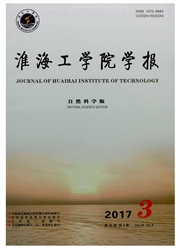

 中文摘要:
中文摘要:
选择干旱内陆河石羊河流域为研究区,分析该流域过去20a间在生态环境自然演替和人类活动干涉下的景观格局特征。从整体上看,研究区各景观类型的利用向非均匀化方向发展,说明区域内各景观类型间的比例差异进一步增加,这种变化在一定程度上反映了人类活动对景观整体的影响。依据累积耗费距离理论,采用最小累积阻力表面(MARS)和耗费表面(MCR)模型,借助表面扩散技术,研究了该流域景观结构紧密性和生态功能空间差异,进而构建源地、生态廊道和生态节点等景观组分来加强生态网络的空间联系,最后提出景观利用优化方案。
 英文摘要:
英文摘要:
Taking an arid interior district of the Shiyang River basin as study area, this paper analyzed the natural sueeession of ecological environment and the landscape pattern characteristics under the human activity interferenee in the past 20 years. The results showed that the landscape utilization developed to the heterogeneous direction, indicating the proportional difference between various landscape types was increasing. This kind of ehange has reflected the human activity' s influence to the whole landscape on a certain extent. According to the principle that the movements of, energy and material in a landscape are related to some factors such as distance, time, impedance, etc. , this study adopts the minimum accumulative resistance surface, the minimum cost resistanee model, and uses the surface diffusion technology to analyze the compactness of landscape structure and the spatial difference of ecological function. Then constructs some landscape components such as source, corridor and ecological node to strengthen the spatial connection of ecological network, and further puts forward the proposals of the landscape pattern optimization.
 同期刊论文项目
同期刊论文项目
 同项目期刊论文
同项目期刊论文
 A study of the impact of climate change on the potential distribution of Qinghai spruce (Picea crass
A study of the impact of climate change on the potential distribution of Qinghai spruce (Picea crass 期刊信息
期刊信息
